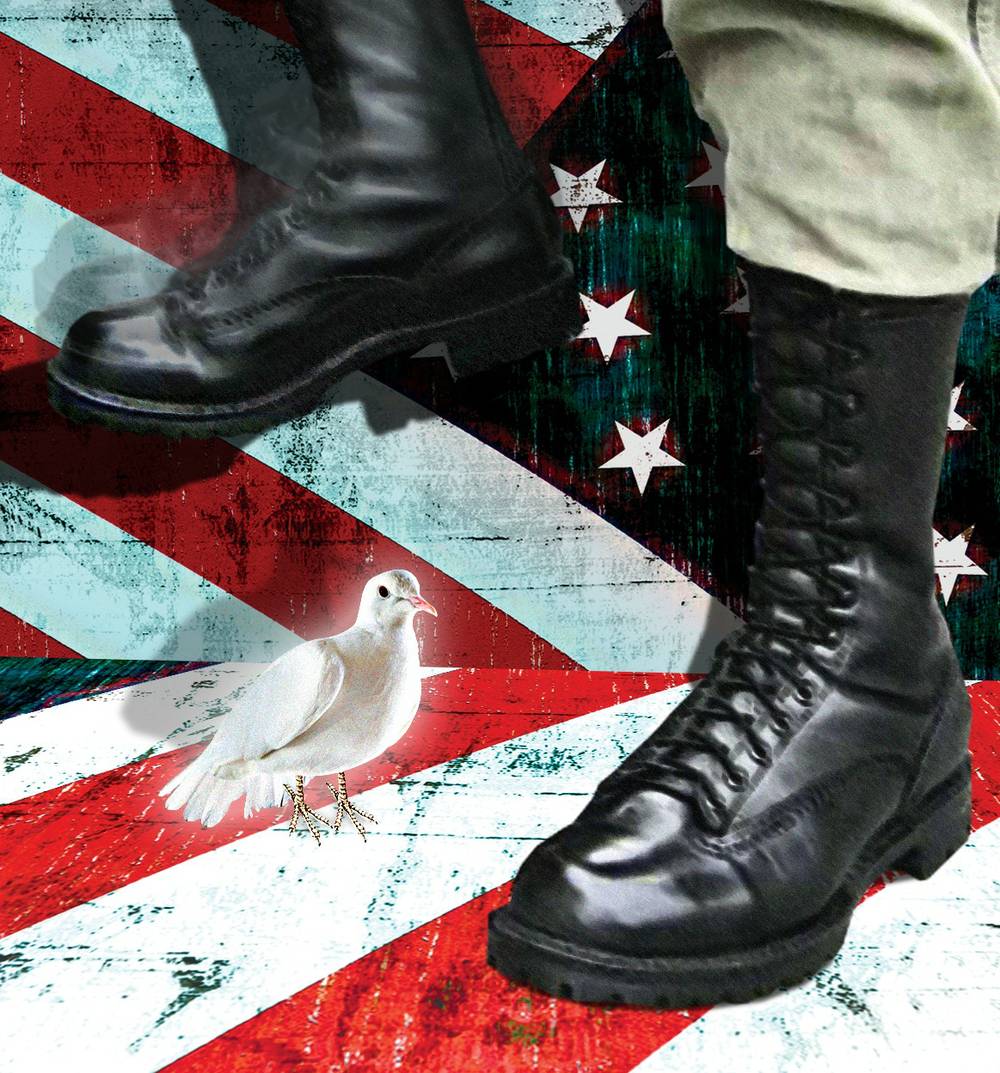The Hutaree Militia was being watched. Sure, the Michigan group catapulted into the news in late March, after nine members were arrested for allegedly plotting to kill police, but knowledge of the their existence—and more importantly, concern about their activities—had already landed the Hutaree on a watch list of 512 anti-government “patriot” groups active in the U.S. in 2009, nearly a quarter of which were armed militias.
The list was released by the Southern Poverty Law Center (SPLC) in early March, as part of a report on hate and extremism in America. Since 2008, the report noted, the number of anti-government groups grew by 244 percent, the number of anti-immigrant “nativist extremist” groups grew by 80 percent, while the number of traditional hate groups—white supremacists and the like—remained at record levels.
Until the raids, the Hutaree were just one among dozens of groups giving observers cause for concern—including groups based in Nevada. The SPLC has six Nevada patriot groups on its watch list, 15 hate groups and eight anti-immigrant groups.
There is no doubt, however, that other Nevada groups are being monitored—and not just by nonprofit organizations like the SPLC, but by police and federal authorities. Nevada’s Joint Terrorism Task Force, a team of local, state and federal authorities, focuses a good part of its efforts on domestic terrorism, according to Las Vegas FBI special agent Joseph Dickey. Metro police, meanwhile, have recently rolled out a number of counter-terrorism programs. In coming months, the department will also launch its Suspicious Activity Reporting Initiative—Metro was one of a dozen law enforcement agencies chosen to participate in the national program, which entails gathering and analyzing reports of, yes, suspicious activity.
It only makes sense that Clark County would be chosen. Fifteen of the world’s 20 largest hotels are within two miles of each other on the Strip. And 92 percent of the Nevada’s high-value assets are within Clark County.
Sheriff Doug Gillespie sums it up simply: “For anyone wanting to make a statement, our city provides an opportunity to do that.”
Of course, local law enforcement is loath to speak about the threat of domestic terrorism on the record or in depth. Privately, however, they’ll acknowledge that Nevada has qualities that could be exploited to the benefit of American extremists: A certain Wild West resentment of big government, a love of firearms, a distrust of regulation, and miles upon miles of rural nothingness, where zealots and agitators could set up shop without much notice.
And domestic terrorism is nothing new. “Remember Oklahoma City?” Gillespie says, “Columbine?” The department makes no distinction—terror is terror, from abroad or from across the street.
What is new, however, is the resurgence of homegrown hate, and the growing number of anti-government groups. The growth of American anger can be plotted, it seems, against a graph of recent events: the election of a liberal black president, the struggling economy, the influx of nonwhite immigrants, the bank bailouts, expansion of federal government programs and a general sense our society is moving increasingly to the left.
This radicalization is helped by another new development: the increasing echo of extremism in mainstream media. Glenn Beck tells fans that Obama is a “socialist” with “Marxist tendencies” at the helm of a country headed towards “totalitarianism,” where state secession is not unreasonable, death panels are real and secret government-run concentration camps are plausible enough to warrant lengthy discussion.
These ideas, aired in prime time, multiply across the Internet. The audience expands as the message warps, which may explain another new development in domestic terrorism: The blending of radicalized groups. Today, “militiamen, white supremacists, anti-Semites, nativists, tax protestors and a range of other activists of the radical right are cross-pollinating and may even be coalescing,” according to an SPLC report.
The Nevada Joint Terrorism Task Force fixes its domestic focus mainly on militia groups, white supremacists and groups affiliated with the sovereign-citizen movement, FBI special agent Dickey says. It’s that last group, however—the sovereign citizens, who reject federal government authority and taxes—that have been the most public subject of law-enforcement scrutiny in Nevada.
In March 2009, members of the Joint Terrorism Task Force raided the “Sovereign People’s Court of Las Vegas,” a makeshift courtroom operating in the back of a Vegas sign shop. Task- force members spent years infiltrating the group, sitting through seminars on how to declare “sovereignty” and pay off creditors with bogus documents—a hallmark of the sovereign movement. Following the raid, four men were arrested on charges ranging from money laundering to possession of unregistered machine guns. One was a former FBI agent; last month, he pleaded guilty to tax evasion. In the home of another, police discovered a crawl space stockpiled with hand grenades, rifles, night-vision goggles and food.
When sovereign citizens do end up in court, it’s a slow process—it’s hard to prosecute someone who feels they aren’t beholden to the law. Moreover, sovereign citizens often clog the court with wild legal filings—fraudulent and misused documents intended to frustrate or intimidate. It’s a practice so central to the sovereign movement that it has a name: “paper terrorism.”
During the 2005 trial of Las Vegas tax protestor Irwin Schiff, a hero of the sovereign movement, IRS agents reported having acid splashed on their cars, court staff had tires slashed and federal marshals had to escort judge Kent Dawson and his wife around town for their own safety.
In a faltering economy, a group that rejects taxes gains traction. Today, sovereign citizens are “among the most dramatically re-energized sector of the radial right,” according to the SPLC.
And where there are conspiracy theories, and a distrust of government, there is room for other extremist groups to recruit, said UNLV sociology professor Robert Futrell, co-author of American Swastika: Inside the White Power Movement’s Hidden Spaces of Hate. White-supremacy groups now see Tea Partiers and militia activists as potential new members—people who just might be convinced the government’s failings have to do with white genocide.
“These people haven’t gone away, they’ve gone underground,” Futrell said. “A lot of them are stockpiling weapons. They have incredibly violent rhetoric, and violent acts flow from violent rhetoric.”
For some white supremacists, Nevada and rural states are seen as places to escape from the impending “New World Order”—a one-world, totalitarian government—and perhaps the single most prevalent conspiracy theory coursing through the extremist upsurge. On tapes recorded by the FBI, Hutaree leader David Stone can be heard telling fellow militia members people were waiting for them to “go to war against the evil, greedy New World Order.”
In their YouTube videos, the Hutaree can be seen preparing for this war, running through the woods in fatigues, hiding in tall grass, firing semi-autos at invisible enemies—a training fantasy the group takes seriously enough to telegraph a dark hope: for all the conspiracies to come true, for a reason to radicalize.
Today, preparing for terrorism means law enforcement doing everything it can to stop an attack or an incident before it starts, says Metro Capt. Brett Primas, commander of the department’s Homeland Security Bureau. It also means, however, making plans to respond after it happens. Police are prepared, Primas said, but not naive.







Previous Discussion: